This piece explores the bubbly wine of Alsace, France: Crémant d’Alsace.
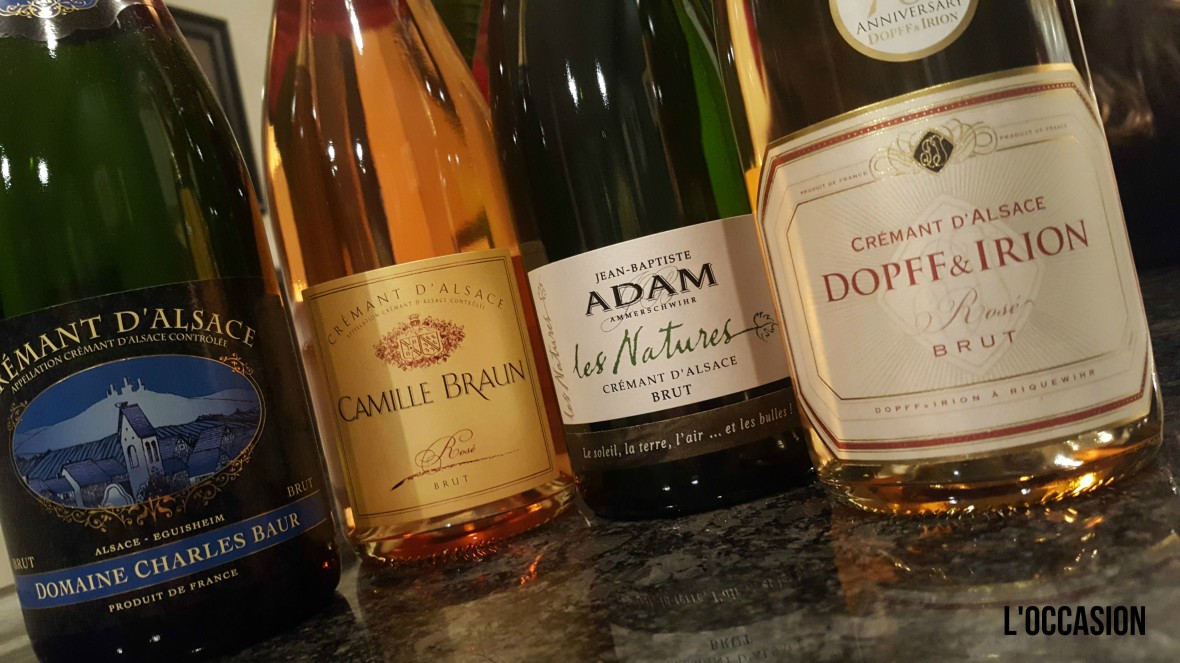
It’s one of the best stories in wine: the origin of bubbles. We’ve heard a few tales, such as Dom Pérignon’s famous quote about seeing stars in the bubbles in his glass of Champagne. Down in Limoux, in southwest France, they claim to be the first to make a French sparkler in the Blanquette de Limoux, which is made of 100% Mauzac and was a treasure President Thomas Jefferson.
Since these early days, the craft of bubbles has been honed and perfected all over the world, with Champagne left to defend themselves: Not all bubbly wine is called Champagne! Don’t say that! And it’s true, not all bubbly wine is from Champagne, and there are other bubbly wines from elsewhere in France that go by different names that may or may not be vintified through different wine-making methods. The lesson here is that the name of French wine embodies where it is from. Always remember that the label on a bottle of French wine is meant to reveal the terroir in which it was grown, not necessarily what is in the bottle. Though, of course, knowing where a wine grew up often tells a rich story about what we’ll find when we taste it.
Crémant d’Alsace
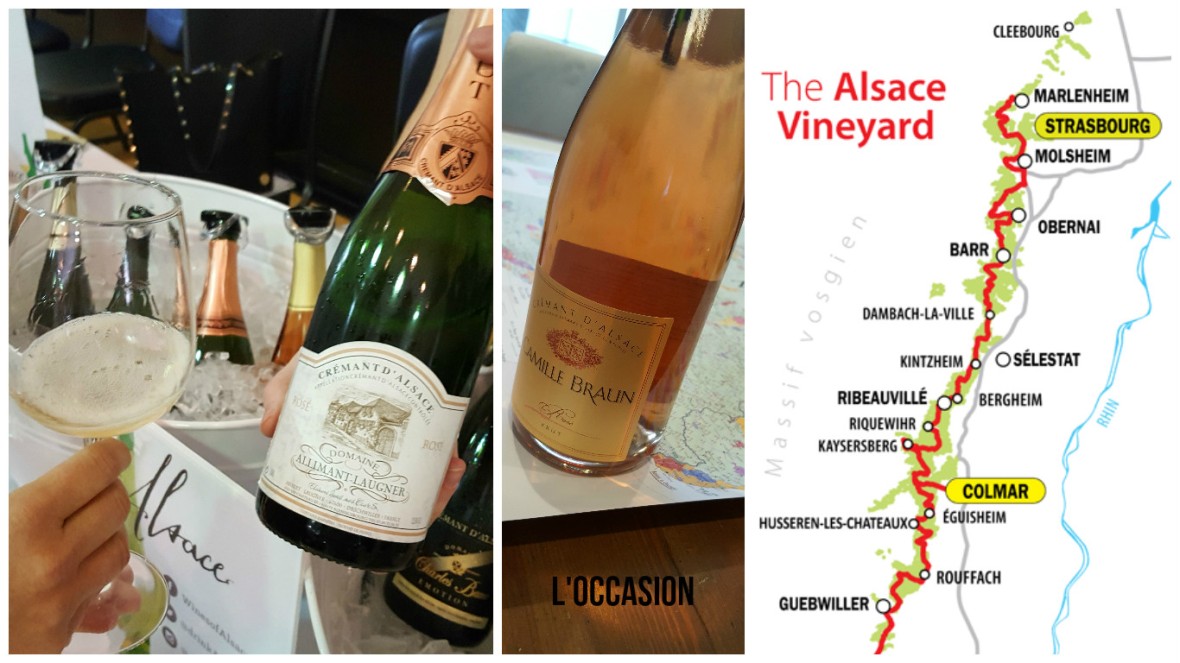
One of my favorite bubbly styles of wine comes from Alsace, which is located in the North East corner of France and threads along the Rhine river. The Route des Vins d’Alsace leads wine lovers through over 100 villages frosted with charming timber homes and buildings. The Vosges Mountains create an additional layer of appeal: beautiful, rolling, natural. Cobblestones, flowers, estates, history (a load of history) are all part of the Alsace experience. Alsace is not far from the Champagne region, but the atmosphere is quite different, with the influence of the Vosges range as well as more sunny warmth.
Cremant d’Alsace wines are picked early, capturing freshness and acidity that presents with vitality in the finished wine which is cleansing, crisp, aromatic and vibrant. Principal grapes are Pinot Blanc, Pinot Gris, Pinot Noir, Riesling or Chardonnay. These wines come in white or rosé shades and fall under their own AOP. Prices are reasonable for these wines, but quality is paramount. Truly a gem in France’s wine crown, expect to be impressed and faithful.
The term crémant describes the method of making the wine and making the bubbles in the wine. I’ll admit that when I read most accounts of how bubbles are made, there is something about the way it comes out on paper that destroys the magic of what really happens. And this is partly because we can’t step on any toes…everything has a purposeful name and this all needs to be clear. To keep it simple, understand that there is a traditional method (Méthode Traditionelle) for manifesting bubbles in the bottle. This method is employed in Alsace and is called crémant.
How the Bubbles Come Alive
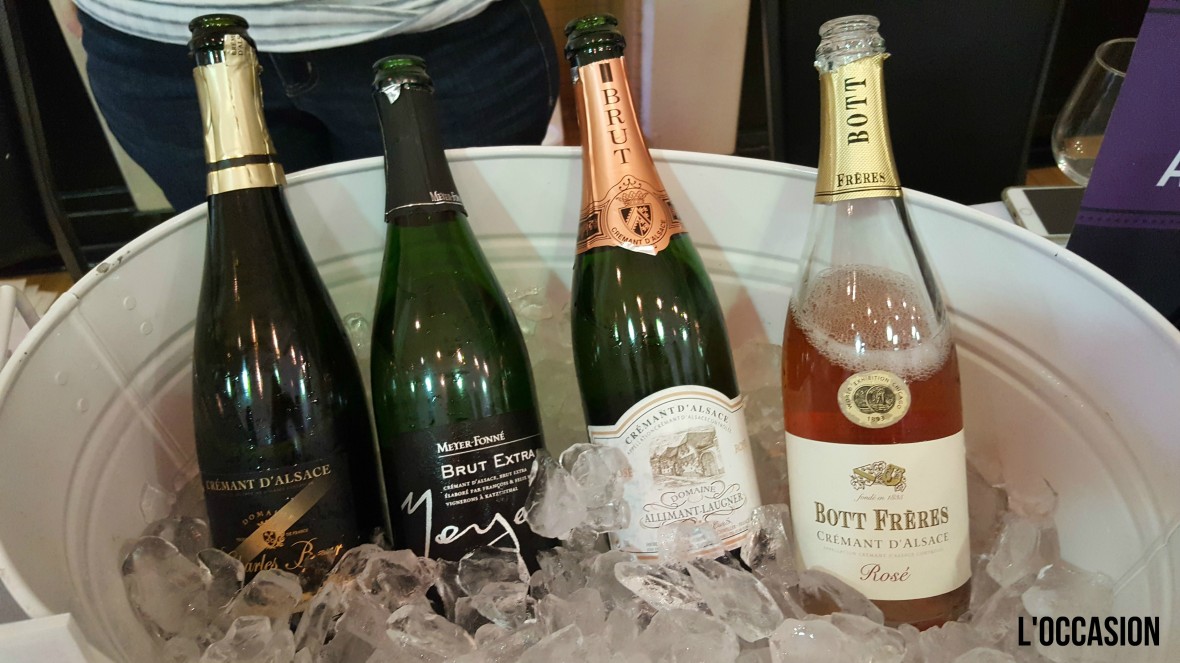
Here’s how it works: the winemaker selects grapes early in the season, while they are still growing and vine, and declares that they will be used to make the crémant. After harvest, winemaker lets them undergo their first fermentation, then she or he selects a blend which goes into bottles with a touch of live yeast and sugar. Imagine this point: the yeasts and the sugar are packed together under the pressure of the bottle the yeast gobble the sugar and all this activity causes a a second fermentation.
In the bottle. That’s the key to the traditional method, the crémant method. When the yeast is done eating, it dies off (imagine this, the live nature of wine, the community that caused the bubbles) and the wine ages in the bottle “on” the yeast cells (called lees). The winemaker will determine when the time has come to halt this process. But what do with the yeast cells? No one wants to drink them…so the bottles are topsy-turvied upside down and the waste flows into the neck of the bottle which is frozen so that it can be cleanly removed from the bottle.
At this point, some bottles are supplemented with a bit of sugar (called residual sugar) which compels the sweetness level of the wine. Finally, it’s bottled up as consumers find it, with the powerful cork and wire cap. This same traditional method is employed in Champagne and in other places around the globe. Elsewhere in France (but not Champagne) it’s also called crémant such as in the Loire and Bourgogne. Cava and sparkling Italian wines called Metodo Classico are born from it too.
Time to Drink
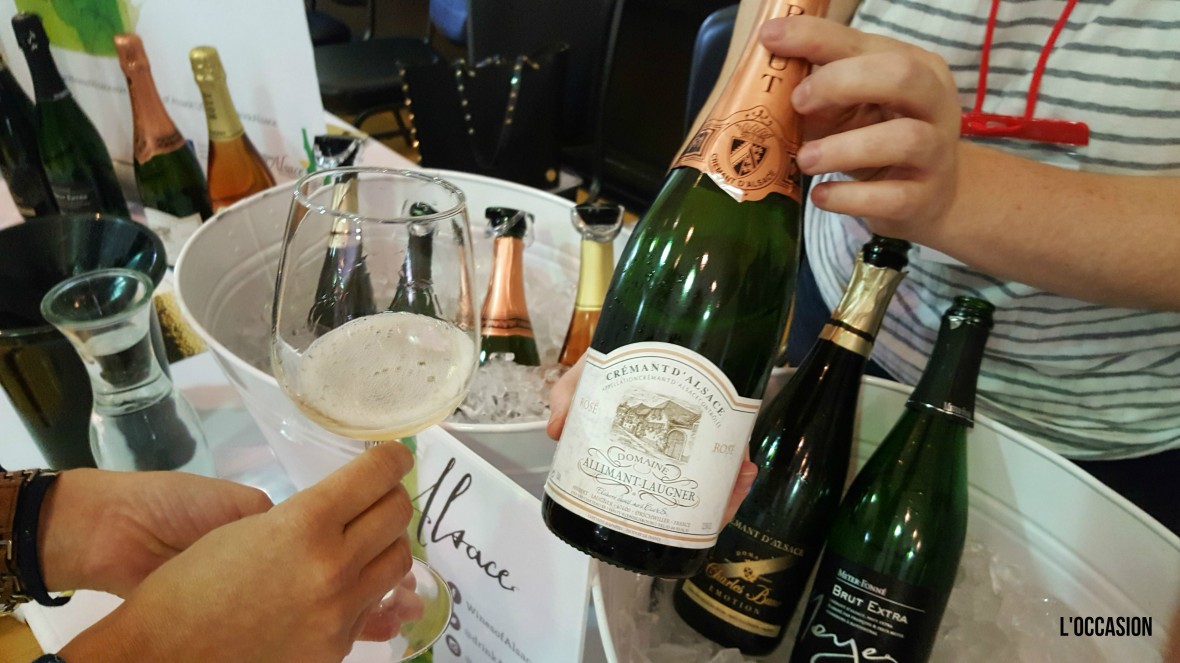
The best way to understand the elusive essence of this process is to open a bottle and drink. Some people are intimidated to open a bottle of bubbly, but it is actually incredibly easy. Though there are decidedly more fun ways, here is a simple method which is clean and danger free:
Have the bubbly cold, the bottle towel-dried and the foil properly removed.
Tilt the bottle away from you, at about 45 degrees. Don’t aim it at anyone or anything, just get the angle right. Hold the cork down with one hand and loosen the wire topper with your other hand. After the wire is removed (or loosened but retained), continue to hold the cork and use your free hand to gently twist the bottle. You’ll do this until you hear the delicate sound of air escaping as the cork frees from the bottle. There might be a little wisp of vapor.
Flute glasses are generally preferred and honestly, a bubbling wine in a polished flute is one of the most beautiful things on Earth. Do with this moment what you will, but there is a time and place to be happy and the bubble-glass moment is one of them.
A for a food hint-hint, I gathered the following pairing idea from Wines of Alsace, sounds lovely and inviting (and easy)…Preheat oven to 325 degrees F. Place a wheel of Camembert in a baking dish and top with 4 springs of thyme, one fig sliced thinly and 1/4 cup of coarsely chopped pistachios and bake for 10 minutes. Serve with crusty bread or crackers.
L’occasion Recommends
The truth is, I’ve had some excellent experiences with Crémant d’Alsace. In fact, I don’t think I’ve tasted one that presented anything less than top quality. Here are several examples, all excellent and all are priced less than $25 USD.
One of my favorite Alsatian portfolios comes from Domaine Allimant-Laugner, which I profiled earlier this year. Their 11th generation winemaker Nicolas works with this family to create a suite of outstanding wines, including their flagship wines, a Brut made from a blend of Pinot Blanc, Pinot Gris and Riesling and a 100% Pinot Noir Rosé.
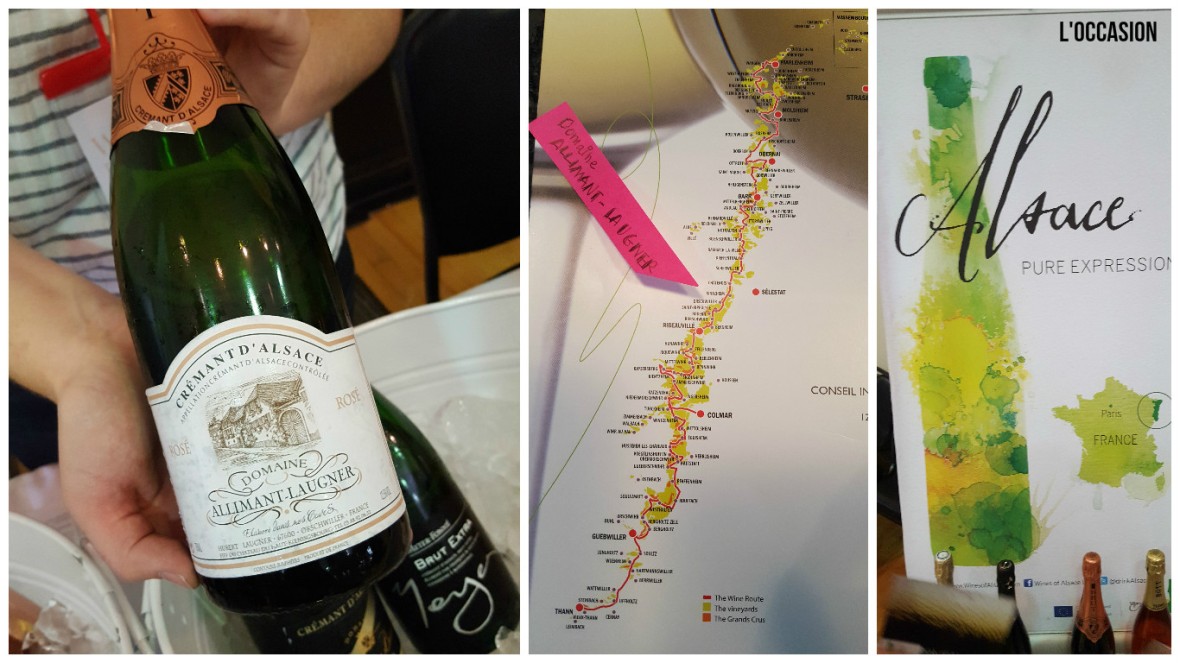
Another of my favorites comes from Domaine Camille Braun; I featured their Auxerrois in a piece earlier this year. They make several crémants and I’ve had the pleasure of enjoying their rosé of Pinot Noir.
Jean-Baptiste Adam “Les Natures” Crémant d’Alsace Brut, which is a biodynamic wine of Chardonnay, Pinot Blanc and Pinot Noir. This wine presents fine bubbles, crisp apple flavors and a present minerality.
Dopff au Moulin Crémant d’Alsace Brut Rosé is made from 100% Pinot Noir. This wine has luminous bubbles and is excellent with a winter meal or on it’s own. Light berry flavors and a creamy texture make this a memorable wine.
Charles Baur Crémant d’Alsace Brut offers a level of delicacy and elegance. Balance white flower fragrance and white fruit flavor are food-friendly or shiny on their own.
The French Winophiles
December’s French Winophiles theme is French Fizz. Any French wine that bubbles in our glass is eligible. We’ve got a group of writers and bloggers lending meal suggestions, travel plans, history, you-name-it. It’s all about bubbles from France and you are invited to be a part of it.
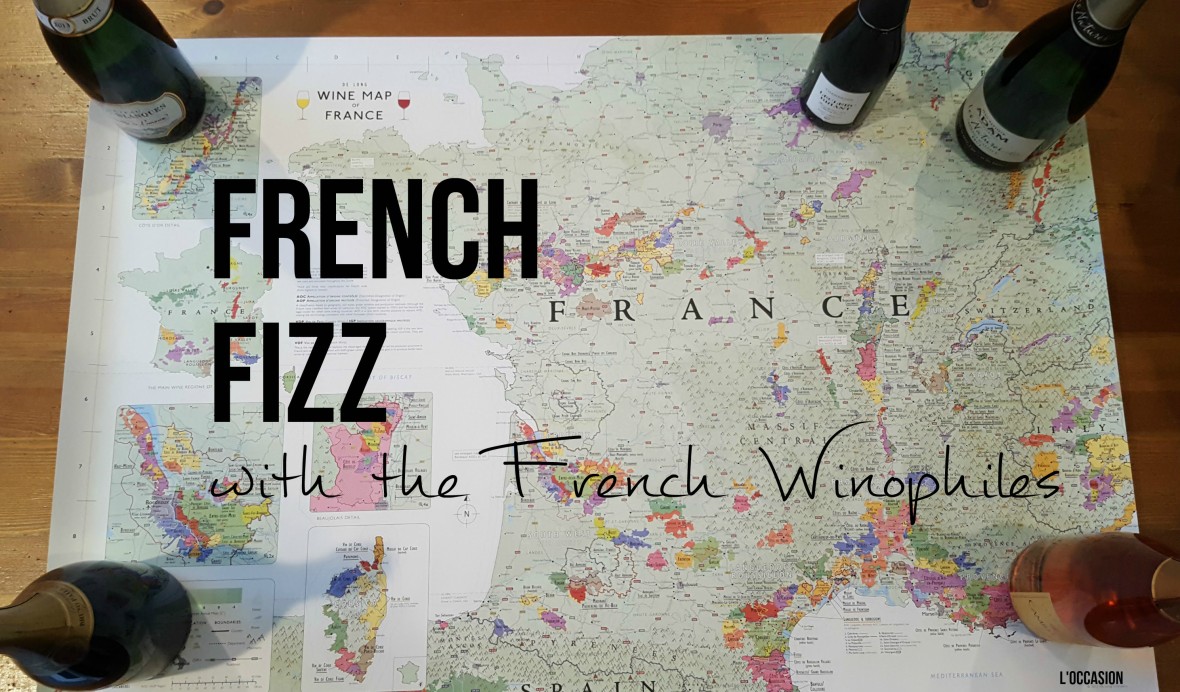
This week our group of writers has been putting finishing touches on the topics. There’s a variety of regions included: Bugey Cerdon, Champagne, Limoux and Alsace. Some writers aren’t featuring a particular region, but a particular wine. Others are pairing French Fizz with a menu (and don’t those dishes sound fabulous?). Some of us are going into cultivating methods, others serving (sabering!) methods. The topics vary, which is intentional this month and we toast to the cooler season. For many of us it is also time of celebration and reflection.
This is the last French Winophiles session of the year. Please join us to enjoy an hour to discuss and learn about sparkling wines from France. Welcome to the following writers and their topics:
Gwendolyn of Wine Predator: French Fizz #Winophiles: In the Pink with Fresh Seafood Crepes, Bisque
Martin of Enofylz Wine Blog: Patrick Bottex “La Cueille” Bugey Cerdon Rosé #Winophiles
LM from binNotes: Celebrating Grower Champagne
Camilla from Culinary Adventures with Camilla: Crisps, Caviar, and Crémant de Limoux
Jeff from FoodWineClick!: Master the Saber with French Fizz
Wendy from A Day in the Life on the Farm: Creme Brulee paired with some French Fizz
Michelle from Rockin Red Blog: How About Some French Fizz this Holiday Season
Here on L’occasion: Fascinating: Crémant d’Alsace
Join us on Saturday December 17th at 10:00 am central time on twitter. We’ll be there under the hashtag #Winophiles. There we will chat about all things related to French Fizz…from all over the country, made from any method, made with any grape.
We’ve been all over France this year, immersing into wine regions one at at time. For more on what I’ve published at L’occasion, as well as links to all the other writers please visit my Winophiles category.
Next year we’ll be rolling out something new, a scope of creative and curious proportions. Be ready to travel and explore with The French Winophiles in fresh ways with fresh perspectives.


Great post Jill! I’ve also had great luck with Cremant d’Alsace (Love the Domaine Allimant-Laugner Rose!) And I recognize those bottles from WBC. Wonderful wonderful wines!
LikeLiked by 1 person
Nice to see write ups on other sparklers, our visit to Alsace this year led to half of my car boot being filled with Cremant d’Alsace from Cave de Turckheim for only about £5 per bottle. So many others available in France and our family favourite is Clairette de Die.
LikeLiked by 1 person
I admit to being a Champagne lover, having lived in France for 7 years and finding so many delicious under-20- euro choices to choose from. Favourite weekend activity is to drive leisurely along the “Champagne Route Touristique” and find tiny vintners who let us sample and buy directly. House names so small we can’t buy them even in Paris. And certainly not in the U.S. It’s a pure form of entertainment that we will miss when it’s time to go home. In the meantime, there is more bubbly to enjoy in France! Will look into your choices for Crémant. However, after 5 years in Germany where we drank Sekt, and only occasionally, I find Champagne is perfect any day of the week with or without food! As I said….my taste buds have been irreparably altered. And maybe that is a good thing…
LikeLiked by 1 person
Great overview of Cremant de Alsace. I agree, they are great sparklers! Cheers!
LikeLiked by 1 person
Love Cremant d’Alsace! In fact I prefer it to champagne!
LikeLiked by 1 person
Love this post! But in fact, I prefer White Wines haha
LikeLike
I am not a big fan of sparklings, but I must say this looks great. I love White wine tho
LikeLike
There are excellent still whites from Alsace, too. Definitely something to check out. Cheers to you and thanks for reading!
LikeLike
Crémant d’Alsace is one of my favorite categories of sparkling wine (I prefer it to champagne, actually.) Now I know a little bit more about it – thank you! #AllAboutFrance
LikeLiked by 1 person
I also love Cremant d’Alsace and I think I prefer it to champagne and also to other countries’ sparkling wines such as prosecco, cava etc – there’s something “cleaner” about it, I think. Would LOVE to do the Route des Vins d’Alsace and see all those half-timbered houses: it’s on my list.
LikeLike
We received a bottle of cremant over Christmas and throughly enjoyed it, wonderful to now learn all about it. Thank you #AllAboutFrance
LikeLiked by 1 person
Fabulous. It’s ages since I’ve had Cremant d’Alsace and I’m glad to be reminded of it. I should seek some out as bubbly is the only sort of wine I can still drink without getting ill.
LikeLiked by 1 person
I enjoy nearly all the alternatives to champagne, and regularly serve crémant to guests. It’s interesting to see how popular prosecco has become in the UK and wonder why crémant is so little known out of France. Maybe they need to get some marketing tips from prosecco! It’s great to learn more about how the bubbles are produced, thanks for linking up to #AllAboutFrance Jill.
LikeLiked by 1 person